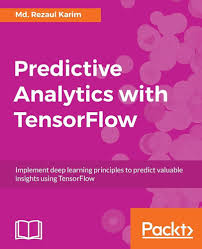White Paper Title: Predictive Analytics with TensorFlow: A Comprehensive Guide
Executive Summary
This white paper provides a comprehensive overview of predictive analytics, focusing on its implementation using TensorFlow, a powerful open-source machine learning framework. We delve into the key concepts, techniques, and best practices involved in building predictive models, from data preparation to model evaluation. TensorFlow's capabilities and advantages in this domain are highlighted, making it a valuable resource for data scientists, researchers, and developers seeking to harness the power of predictive analytics.
Introduction
- Definition of predictive analytics
- The importance of predictive analytics in various industries
- Overview of TensorFlow and its capabilities for predictive modeling
Part I: Understanding Predictive Analytics
- Key Concepts:
- Supervised learning vs. unsupervised learning
- Classification vs. regression
- Feature engineering and selection
- Common Predictive Modeling Techniques:
- Linear regression
- Logistic regression
- Decision trees and random forests
- Support vector machines
- Neural networks
- Time series analysis
Part II: TensorFlow for Predictive Analytics
- TensorFlow Basics:
- Introduction to TensorFlow's computational graph
- Tensors and operations
- Building and training models
- Data Preparation:
- Data loading and preprocessing
- Feature normalization and scaling
- Handling missing data
- Model Building and Training:
- Creating TensorFlow models
- Loss functions and optimizers
- Training and validation
- Model Evaluation:
- Metrics for evaluating model performance
- Overfitting and underfitting
- Hyperparameter tuning
Part III: Advanced Topics in TensorFlow for Predictive Analytics
- Deep Learning with TensorFlow:
- Convolutional neural networks (CNNs)
- Recurrent neural networks (RNNs)
- Generative adversarial networks (GANs)
- TensorFlow Extended (TFX):
- End-to-end machine learning pipelines
- Component-based architecture
- Integration with other tools
- Deployment and Scaling:
- Deploying models to production
- Scaling models for large datasets
- Monitoring and maintaining models
Case Studies
- Real-world applications of predictive analytics using TensorFlow
- Success stories and challenges faced
References
- Chollet, F. (2018). Deep Learning with Python. Manning Publications.
- Géron, A. (2019). Hands-On Machine Learning with Scikit-Learn, Keras, and TensorFlow.
- TensorFlow Documentation: https://www.tensorflow.org/
Note: This outline provides a comprehensive framework for the white paper. You can expand on specific sections, add additional case studies, or incorporate other relevant theories and concepts. Contact ias-research.com



